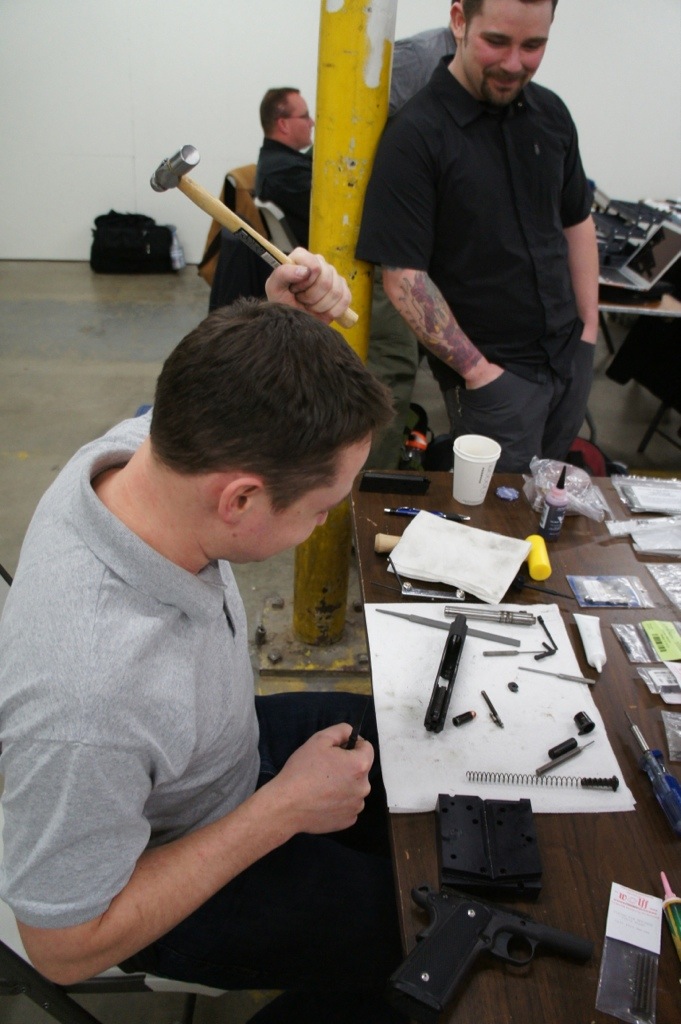This weekend, I had the opportunity to take the excellent 10-8 Consulting 1911 Advanced Armorer’s Course. I’ll have a full class write up on Wednesday, but today I wanted to share some of my observations from the class.
One of the first things I really noticed is that being a 1911 armorer is a lot more complicated than being a Glock armorer. It just is. There are more bits in a 1911 that interact in more ways, and those little interactions can cause a lot more problems. The big problem with 1911s is that there’s no actual industry standard for different guns. So a part that fits and works just fine in a Colt could require a ton of fitting in a Springfield.
The second observation I noticed was that the further guns get from the basic 1911 design in terms of mechanics and internal geometry, the more problems they start to develop. Even little things like lightweight triggers with overtravel stops can cause issues in a 1911 if their fitting isn’t simpatico with the other parts in the gun.
However, the most important thing I took away from the class is that most 1911s will never need the sort of attention to detail that you learn how to provide in the excellent 10-8 Armorer’s Course…because most 1911s will never be shot enough to need it. If you carry a 1911, whether by personal choice or agency mandate, than your gun should receive special attention to detail. You should know if it’s ejecting correctly, how to turn the extractor, and perform the regular maintenance tasks necessary to keep the gun running well. You’re betting your life on this gun, and that’s worth a little bit of attention.
But if you just own a 1911 to take the range occasionally and shoot ball ammo through? Reliability probably doesn’t matter that much. It becomes a classic car with an engine that plays up from time to time – no big deal, because you’re not counting on it to take to you work. But if you are counting on your gun to win matches or even more importantly to defend your life, you should probably learn what makes it tick. Not just “hey my gun is malfunction”, but when you see a malfunction being able to diagnose likely causes and through a process of elimination figure out what caused the issues with your gun.
If you want to set yourself up for success with a serious use 1911, some of the guidelines I picked up from the class will be useful. The basic formula appears to be straightforward: all steel, 5 inch 1911 chambered in .45, that is as close to the original Browning design in terms of internal function and geometry as possible. The further you get from that, it seems you get more and more likely to run into trouble.
